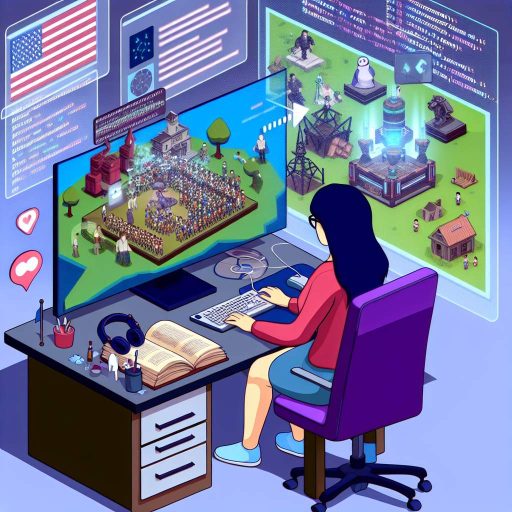Introduction:
Collaboration between tech product managers and designers is crucial for seamless product development.
Effective collaboration ensures alignment in goals and enhances communication.
It can lead to innovative solutions and successful product launches.
In this blog post, we will discuss key tips to foster collaboration between product managers and designers for optimal outcomes.
Establish Clear Communication Channels:
Effective collaboration between tech product managers and designers is essential for the success of any project.
One of the key factors in ensuring smooth workflow and synergy between the two teams is establishing clear communication channels.
Communication is the backbone of any successful collaboration.
Emphasizing the importance of open and transparent communication between product managers and designers is crucial.
This ensures that everyone is on the same page, working towards the same goals, and can address any issues or concerns that may arise promptly.
To facilitate communication, it is recommended to leverage tools like Slack, Trello, or Google Docs.
These platforms provide a convenient and efficient way for teams to share updates, ideas, and feedback in real-time.
By utilizing such tools, product managers and designers can streamline their communication process, leading to increased productivity and better collaboration.
In addition to using digital tools, it is also beneficial to schedule regular meetings between product managers and designers.
These meetings provide an opportunity to discuss progress on projects, address any challenges that may have arisen, and provide feedback on the work being done.
By having regular check-ins, teams can ensure that projects are moving forward smoothly and that any issues are addressed promptly.
Overall, establishing clear communication channels is essential for fostering collaboration between tech product managers and designers.
By emphasizing open communication, utilizing digital tools, and scheduling regular meetings, teams can ensure that they are working together effectively towards achieving project success.
- Emphasize the importance of open and clear communication between product managers and designers.
- Utilize tools like Slack, Trello, or Google Docs for easy communication and collaboration.
- Schedule regular meetings to discuss progress, challenges, and feedback.
Define Roles and Responsibilities:
Clearly outline the roles and responsibilities of both product managers and designers.
Product Managers:
- Responsible for defining the product vision and strategy.
- Collaborate with stakeholders to gather requirements.
- Prioritize features and functionalities for the product roadmap.
- Ensure the product meets business goals and user needs.
- Communicate project status and updates to the team.
Designers:
Transform Your Career Today
Unlock a personalized career strategy that drives real results. Get tailored advice and a roadmap designed just for you.
Start Now- Create user-centered designs that align with the product vision.
- Conduct user research to inform design decisions.
- Develop wireframes, prototypes, and visual designs.
- Collaborate with developers to implement designs.
- Provide design feedback and iterate based on user feedback.
Ensure everyone understands their specific tasks and how they contribute to the overall project.
Product Managers:
- Clearly communicate expectations and goals to the team.
- Provide context for design decisions based on business objectives.
- Encourage collaboration and communication among team members.
- Support designers in understanding the user needs and business requirements.
- Recognize and appreciate the contributions of the design team.
Designers:
- Understand the product vision and business goals.
- Clarify design decisions and rationale to stakeholders.
- Collaborate with product managers to align designs with the roadmap.
- Seek feedback and iterate on designs based on user research.
- Contribute ideas and suggestions to improve the overall product experience.
Avoid micromanaging and trust team members to fulfill their responsibilities effectively.
Product Managers:
- Delegate tasks and empower team members to make decisions.
- Trust the expertise and skills of designers in creating impactful designs.
- Provide support and guidance when needed, but avoid constant supervision.
- Encourage autonomy and ownership among team members.
- Focus on results and outcomes rather than micromanaging the process.
Designers:
- Take ownership of design tasks and deliverables.
- Seek clarification when needed but demonstrate initiative and independence.
- Communicate progress and challenges proactively to the product manager.
- Collaborate with cross-functional teams without constant oversight.
- Strive for excellence in design execution while meeting project goals.
See Related Content: IT Compliance Officer: Balancing Security and Compliance
Foster a Creative and Inclusive Environment:
Creating a creative and inclusive environment is crucial for successful collaboration between product managers and designers.
By fostering a workspace where creativity flourishes, ideas are freely shared, and diverse perspectives are valued, the overall quality of the end product can greatly benefit.
Here are some tips on how to achieve this:
- Encourage creativity and idea sharing among team members:
- Product managers and designers should be encouraged to think outside the box and share their innovative ideas openly. This can lead to breakthrough solutions and unique approaches that might not have been considered otherwise.
- Create a safe space for designers to express their opinions and suggestions:
- Designers often have valuable insights and perspectives that can contribute significantly to the success of a tech product. By creating a supportive environment where they feel comfortable sharing their thoughts, you can leverage their expertise effectively.
- Value diversity and different perspectives to enrich the collaborative process:
- Diversity in thought, background, and experience can bring fresh ideas and solutions to the table. Embrace these differences and encourage open dialogue to explore various viewpoints, ultimately leading to a more well-rounded and innovative product.
Fostering a creative and inclusive environment is key to fostering a positive collaboration between tech product managers and designers.
By encouraging creativity, providing a safe space for idea sharing, and embracing diverse perspectives, teams can work together more effectively towards creating successful and impactful products.
See Related Content: How Edge Computing Impacts Autonomous Vehicles
Set Clear Goals and Priorities:
Collaboration between tech product managers and designers is a key factor in the success of a project.
One of the fundamental aspects of effective collaboration is setting clear goals and priorities from the beginning.
This helps in aligning the team towards a common vision and direction.
- Define clear goals, objectives, and priorities for the project.
- Ensure that both product managers and designers are aligned on the vision and direction of the product.
- Regularly revisit and adjust goals as needed to stay on track and meet deadlines.
Here are some tips on how to achieve this:
1. Define Clear Goals: Start by clearly defining the goals, objectives, and priorities of the project.
This should include specific targets and deliverables that both the product managers and designers can work towards.
Showcase Your Business Today
Reach thousands of readers actively exploring professional services. Publish your business profile and grow your audience now.
Publish NowSetting clear goals helps in guiding the team towards a unified purpose.
2. Alignment of Vision: It is crucial that both the product managers and designers are aligned on the vision and direction of the product.
This ensures that everyone is on the same page and working towards a common goal.
Regular communication and collaboration can help in achieving this alignment.
3. Regular Review and Adjustment: Goals and priorities may need to be revisited and adjusted as the project progresses.
It is essential to regularly review the goals and priorities to ensure that the team is on track and meeting deadlines.
This flexibility allows for better adaptability to changing circumstances and requirements.
4. Communication: Effective communication is key to setting and maintaining clear goals and priorities.
Product managers and designers should communicate openly and regularly to ensure that everyone is updated on any changes or adjustments to the project goals.
This helps in avoiding misunderstandings and ensures that everyone is working towards the same objectives.
5. Documentation: It is essential to document the goals, objectives, and priorities of the project.
This documentation serves as a reference point for the team and helps in aligning everyone towards the same vision.
It also helps in tracking progress and identifying any deviations from the set goals.
6. Collaborative Decision-Making: When setting goals and priorities, it is important to involve both product managers and designers in the decision-making process.
This collaborative approach ensures that everyone has a say in determining the direction of the project and helps in creating a sense of ownership and accountability among team members.
Setting clear goals and priorities is essential for the successful collaboration between tech product managers and designers.
By defining clear objectives, aligning on the vision, regularly reviewing and adjusting goals, communicating effectively, documenting the goals, and involving the team in decision-making, the project can stay on track and meet its deadlines effectively.
Delve into the Subject: Collaborating with IT Teams as an Application Support Analyst
Provide Constructive Feedback:
- Offer constructive feedback on designs and product features
- Focus on specific areas for improvement and provide actionable suggestions
- Encourage open dialogue and learning from feedback to enhance the final product
Collaboration between tech product managers and designers relies heavily on effective communication and feedback.
Providing constructive feedback is crucial to ensuring that the final product meets the necessary standards and requirements.
Here are some key tips for offering constructive feedback:
Be Specific:
When giving feedback, it is important to be as specific as possible.
Instead of vague comments like “I don’t like this,” focus on particular aspects of the design or feature that need improvement.
Offer Actionable Suggestions:
Simply pointing out flaws is not enough.
Provide actionable suggestions on how to address the issues identified.
This could include proposing alternative design elements or features that might work better.
Use Positive Language:
While it is important to highlight areas for improvement, it is equally essential to frame feedback in a positive light.
Use constructive language that encourages growth and improvement rather than focusing solely on the negative aspects.
Foster Open Dialogue:
Encourage an open dialogue between product managers and designers.
Allow for questions, clarifications, and additional input to ensure that feedback is understood and can be effectively implemented.
Focus on Growth:
Feedback should not be seen as a critique but as an opportunity for growth and learning.
Emphasize the importance of using feedback to enhance the final product and achieve better results.
Address Design Principles:
When providing feedback on designs, consider fundamental design principles such as usability, accessibility, and aesthetics.
Highlight how these principles can be better incorporated into the product.
Collaborate on Solutions:
Instead of dictating changes, collaborate with designers to find effective solutions.
Work together to brainstorm ideas and come up with innovative approaches that address the feedback provided.
Provide Context:
When offering feedback, provide context to help designers understand the rationale behind the suggestions.
Explain why certain changes are necessary and how they align with the overall goals of the project.
Encourage Iteration:
Feedback should be an iterative process.
Encourage designers to iterate on their designs based on the feedback received, continually refining and improving the product until it meets the desired standards.
Showcase Your Business Today
Reach thousands of readers actively exploring professional services. Publish your business profile and grow your audience now.
Publish NowRecognize Efforts:
Finally, acknowledge the efforts put in by designers and product managers.
Recognize their hard work and dedication, and provide positive reinforcement to motivate and inspire continued collaboration.
By following these tips, tech product managers and designers can effectively collaborate and work together to create innovative and successful products that meet user needs and expectations.
You Might Also Like: Creating Effective User Stories for Tech Products

Embrace Iterative Design and Development:
– Adopt an iterative approach to design and development.
– Encourage frequent testing, feedback, and refinement of the product.
– Embrace flexibility and adaptability to changes in requirements or user feedback.
Iterative design and development is essential in creating successful tech products.
By following an iterative approach, product managers and designers can continuously refine their work based on ongoing testing and feedback.
Here are some tips on how to effectively embrace iterative design and development:
Start Small:
Begin by focusing on creating a minimum viable product (MVP) that can be quickly tested with end-users.
This allows for early feedback and validation of key features.
Conduct Regular Tests:
Schedule regular user testing sessions to gather feedback on the product.
Use this feedback to make informed decisions on what to improve or iterate upon.
Prioritize Feedback:
Actively seek feedback from users, stakeholders, and team members throughout the design and development process.
Prioritize feedback that aligns with the product vision and goals.
Embrace Change:
Be open to changing course based on new insights or user feedback.
Adaptability is key in responding to evolving requirements and ensuring the product meets user needs.
Monitor Metrics:
Track key performance indicators and user engagement metrics to measure the impact of design changes.
Use this data to inform future iterations and improvements.
Collaborate Closely:
Foster strong collaboration between product managers and designers to ensure alignment on goals and priorities.
Encourage open communication and shared ownership of the product’s success.
Iterate Rapidly:
Aim to iterate quickly and frequently, making small adjustments based on feedback and testing results.
This agile approach allows for continuous improvement and innovation.
Document Learnings:
Keep a record of key learnings and insights gained from each iteration.
Documenting this information can help inform future design decisions and prevent repeating past mistakes.
Emphasize User-Centricity:
Always keep the end-user in mind when making design and development decisions.
Prioritize user experience and usability to create a product that resonates with your target audience.
Collaborate on User Research and Testing:
- Involve both product managers and designers in user research and testing processes.
- Share insights, observations, and feedback from user interactions.
- Use data-driven decision-making to inform design and product development decisions.
When it comes to creating successful tech products, collaboration between product managers and designers is crucial. One area where this collaboration can be particularly effective is in user research and testing.
Why Collaboration?
By involving both product managers and designers in user research and testing processes, you are able to leverage the unique perspectives and expertise of each role. Product managers bring a deep understanding of the market and user needs, while designers have a keen eye for usability and visual appeal.
Sharing Insights
During user research and testing, it is important to share insights, observations, and feedback from user interactions. This allows both product managers and designers to gain a well-rounded view of the user experience, leading to better-informed decisions.
Data-Driven Decision Making
Utilizing data-driven decision-making is key in informing design and product development decisions. By analyzing user feedback and behavior, product managers and designers can prioritize features and enhancements that will have the greatest impact on user satisfaction and product success.
Collaborating on user research and testing allows product managers and designers to work together towards creating tech products that truly meet user needs and expectations. This collaborative approach leads to more informed decision-making, better product outcomes, and ultimately, happier users.
Effective Collaboration Strategies
To collaborate effectively, communicate openly.
Set clear goals and respect each other’s expertise.
Implementing these tips will lead to a more cohesive and successful product development process.
Collaboration between product managers and designers is essential for creating innovative and user-centric tech products.
Additional Resources
Roles and Responsibilities | Section508.gov
Showcase Your Business Today
Reach thousands of readers actively exploring professional services. Publish your business profile and grow your audience now.
Publish NowAtlassian Jobs: View Listings for Open Positions | Atlassian
[E-Books for Sale]
The Big Book of 500 High-Paying Jobs in America: Unlock Your Earning Potential
$19.99 • 500 High-Paying Jobs • 330 pages
Explore 500 high-paying jobs in America and learn how to boost your career, earn more, and achieve success!
See All 500 High-Paying Jobs of this E-Book
1001 Professions Without a Degree: High-Paying American Jobs You Can Start Now
$19.99 • 1001 Professions Without a Degree • 174 pages
Discover 1001 high-paying jobs without a degree! Unlock career tips, skills, and success strategies for just $19.99!




